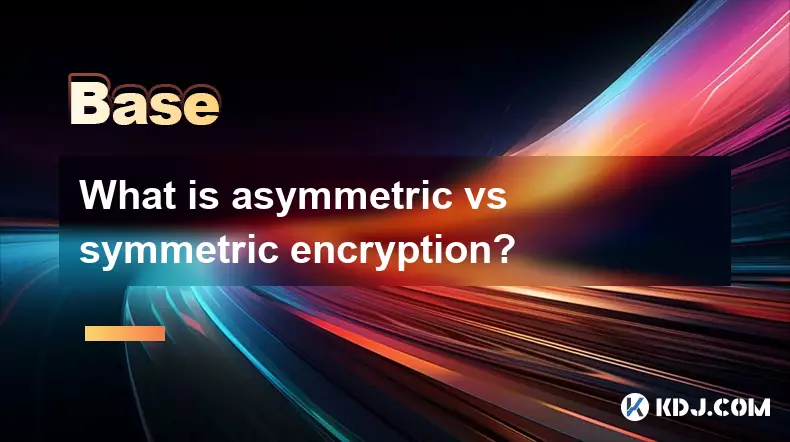-
 Bitcoin
Bitcoin $112100
0.77% -
 Ethereum
Ethereum $4474
3.78% -
 XRP
XRP $2.851
0.46% -
 Tether USDt
Tether USDt $1.000
0.01% -
 BNB
BNB $856.0
0.45% -
 Solana
Solana $209.3
1.04% -
 USDC
USDC $0.9998
-0.02% -
 Dogecoin
Dogecoin $0.2216
3.68% -
 TRON
TRON $0.3420
1.19% -
 Cardano
Cardano $0.8415
1.56% -
 Chainlink
Chainlink $23.79
1.74% -
 Hyperliquid
Hyperliquid $46.03
3.38% -
 Ethena USDe
Ethena USDe $1.001
0.04% -
 Sui
Sui $3.399
2.98% -
 Bitcoin Cash
Bitcoin Cash $599.8
3.03% -
 Stellar
Stellar $0.3628
-0.44% -
 Avalanche
Avalanche $25.24
4.29% -
 Cronos
Cronos $0.2809
9.58% -
 Hedera
Hedera $0.2203
0.68% -
 UNUS SED LEO
UNUS SED LEO $9.526
-0.04% -
 Litecoin
Litecoin $112.7
0.88% -
 Toncoin
Toncoin $3.188
0.41% -
 Shiba Inu
Shiba Inu $0.00001253
0.80% -
 Polkadot
Polkadot $3.891
2.61% -
 Uniswap
Uniswap $9.732
2.10% -
 Bitget Token
Bitget Token $4.971
-2.70% -
 Dai
Dai $0.0000
0.01% -
 World Liberty Financial
World Liberty Financial $0.2148
-8.62% -
 Aave
Aave $327.8
3.77% -
 Monero
Monero $270.0
1.47%
What is asymmetric vs symmetric encryption?
Symmetric encryption uses a single key for both encryption and decryption, making it fast and efficient for securing large volumes of data.
Sep 03, 2025 at 01:00 pm

Understanding Symmetric Encryption
1. Symmetric encryption relies on a single cryptographic key that is used for both encryption and decryption. This means the sender and receiver must securely share the same key beforehand. The simplicity of this method makes it fast and efficient, especially when handling large volumes of data.
2. Common symmetric encryption algorithms include AES (Advanced Encryption Standard), DES (Data Encryption Standard), and Blowfish. Among these, AES is widely adopted in the blockchain and cryptocurrency space due to its strong security and performance.
3. One major challenge with symmetric encryption is key distribution. If two parties are communicating over an insecure network, transmitting the key can expose it to interception. In the context of cryptocurrency wallets, if a user loses the private key, access to encrypted data or funds is permanently lost.
4. Despite its vulnerabilities in key exchange, symmetric encryption remains essential in securing data at rest. For example, encrypted wallet files stored on a user’s device often use symmetric keys to protect private information from unauthorized access.
5. Because of its speed, symmetric encryption is frequently used in combination with asymmetric methods. It handles bulk data encryption while asymmetric encryption secures the initial key exchange process.
The Role of Asymmetric Encryption
1. Asymmetric encryption, also known as public-key cryptography, uses a pair of mathematically linked keys: a public key and a private key. The public key can be freely shared and is used to encrypt data, while the private key remains secret and is used for decryption.
2. In the cryptocurrency ecosystem, asymmetric encryption is fundamental to wallet addresses and transaction signing. When a user sends crypto, they sign the transaction with their private key, and the network verifies it using the corresponding public key.
3. Popular asymmetric algorithms include RSA, ECC (Elliptic Curve Cryptography), and EdDSA. ECC is particularly favored in blockchain systems because it offers high security with smaller key sizes, reducing storage and bandwidth requirements.
4. Unlike symmetric encryption, asymmetric methods solve the key distribution problem. Users can publish their public keys without compromising security. This enables trustless communication, a core principle in decentralized networks.
5. The computational complexity of asymmetric encryption makes it slower than symmetric methods. For this reason, it is typically used for encrypting small amounts of data, such as session keys or digital signatures, rather than entire message payloads.
Integration in Blockchain Systems
1. Most blockchain protocols combine both encryption types to balance security and efficiency. For instance, when establishing a secure connection to a crypto exchange API, TLS (Transport Layer Security) uses asymmetric encryption to exchange a symmetric session key.
2. Wallets use asymmetric encryption to generate address pairs. The public key is hashed to create a wallet address, while the private key must be kept secure to authorize transactions. Losing the private key means losing control over the associated funds permanently.
3. Smart contracts on platforms like Ethereum rely on asymmetric signatures to validate the authenticity of function calls. Only the holder of the correct private key can initiate certain actions, ensuring accountability and integrity.
4. Encryption also plays a role in layer-2 solutions and privacy-focused blockchains. Zero-knowledge proofs and confidential transactions often use hybrid models involving both symmetric and asymmetric techniques to obscure transaction details without sacrificing verifiability.
5. Nodes in a decentralized network use digital signatures, based on asymmetric cryptography, to authenticate messages and prevent spoofing. This ensures that only legitimate participants can propagate valid blocks and transactions.
Frequently Asked Questions
How do public and private keys work in cryptocurrency transactions?In cryptocurrency, the private key is used to sign transactions, proving ownership of funds. The public key, derived from the private key, is used by others to verify the signature. The wallet address is generated by hashing the public key, allowing others to send funds without exposing sensitive information.
Can symmetric encryption be used alone in blockchain networks?While symmetric encryption is efficient, it cannot fully replace asymmetric encryption in blockchain systems. The inability to securely distribute keys over public networks makes it unsuitable for authenticating identities and signing transactions, which are critical functions in decentralized environments.
Why is ECC preferred over RSA in modern cryptocurrencies?ECC provides equivalent security to RSA with much shorter key lengths. A 256-bit ECC key offers similar protection to a 3072-bit RSA key, making ECC more efficient in terms of computation, storage, and bandwidth—key advantages for resource-constrained blockchain networks.
What happens if someone gains access to my private key?Immediate loss of control over associated digital assets occurs. Anyone with access to the private key can sign transactions and transfer funds. There is no central authority to reverse such actions, emphasizing the need for secure key management.
Disclaimer:info@kdj.com
The information provided is not trading advice. kdj.com does not assume any responsibility for any investments made based on the information provided in this article. Cryptocurrencies are highly volatile and it is highly recommended that you invest with caution after thorough research!
If you believe that the content used on this website infringes your copyright, please contact us immediately (info@kdj.com) and we will delete it promptly.
- Tokenized RWAs, DeFi, and Payments: A New Era in Finance
- 2025-09-04 14:25:14
- XRP Whale Watching: How PEPE and TRUMP Coins Play the Altcoin Game
- 2025-09-04 15:10:12
- BlockDAG, Crypto Rankings, and the Hybrid Model Hype: What's the Deal?
- 2025-09-04 15:25:16
- XRP, Regulators, and a Surge of Optimism: What's Next?
- 2025-09-04 15:25:16
- Bitcoin, Treasury Yields, and Gold: A Wild Ride for Your Portfolio
- 2025-09-04 15:45:25
- XRP: Navigating Legal Clarity at a Bullish Crossroads
- 2025-09-04 15:30:13
Related knowledge

What is "backtesting" a crypto trading strategy?
Sep 03,2025 at 10:55am
Understanding Backtesting in Crypto TradingBacktesting is the process of evaluating a trading strategy by applying it to historical market data. Trade...

What is a "crypto trading bot" and do they work?
Sep 02,2025 at 04:19pm
Understanding Crypto Trading Bots1. A crypto trading bot is a software application designed to automate the process of buying and selling cryptocurren...

What is a "copy trading" platform?
Sep 02,2025 at 07:00pm
Understanding Copy Trading in the Cryptocurrency Space1. A copy trading platform allows users to automatically replicate the trades of experienced inv...

What is "social trading" for crypto?
Sep 03,2025 at 09:00pm
Understanding Social Trading in the Cryptocurrency Space1. Social trading refers to a method where investors observe, follow, and automatically replic...

What is a "crypto basket" or index?
Sep 03,2025 at 07:01am
Understanding Crypto Baskets and Their Role in Digital Asset Investment1. A crypto basket refers to a curated collection of multiple cryptocurrencies ...

What are "impermanent loss" calculators?
Sep 03,2025 at 12:00pm
Understanding Impermanent Loss in Decentralized Finance1. Impermanent loss is a phenomenon that affects liquidity providers in decentralized exchanges...

What is "backtesting" a crypto trading strategy?
Sep 03,2025 at 10:55am
Understanding Backtesting in Crypto TradingBacktesting is the process of evaluating a trading strategy by applying it to historical market data. Trade...

What is a "crypto trading bot" and do they work?
Sep 02,2025 at 04:19pm
Understanding Crypto Trading Bots1. A crypto trading bot is a software application designed to automate the process of buying and selling cryptocurren...

What is a "copy trading" platform?
Sep 02,2025 at 07:00pm
Understanding Copy Trading in the Cryptocurrency Space1. A copy trading platform allows users to automatically replicate the trades of experienced inv...

What is "social trading" for crypto?
Sep 03,2025 at 09:00pm
Understanding Social Trading in the Cryptocurrency Space1. Social trading refers to a method where investors observe, follow, and automatically replic...

What is a "crypto basket" or index?
Sep 03,2025 at 07:01am
Understanding Crypto Baskets and Their Role in Digital Asset Investment1. A crypto basket refers to a curated collection of multiple cryptocurrencies ...

What are "impermanent loss" calculators?
Sep 03,2025 at 12:00pm
Understanding Impermanent Loss in Decentralized Finance1. Impermanent loss is a phenomenon that affects liquidity providers in decentralized exchanges...
See all articles

























































































